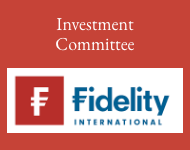Investment boutique ValuAnalysis has warned that categorising stocks into either ‘growth’ or ‘value’ can be misleading.
Instead, the firm believes the correct continuum should be ‘low to high expected growth’.
So-called ‘value’ stocks have outperformed since 9 November, when positive news of the Pfizer Covid-19 vaccine was announced and investor appetite shifted towards cheaper stocks after long-term underperformance.
In its latest research paper ‘Price of Value’, ValuAnalysis has identified various factors that may cause a business to trade on multiples that fall below the median, therefore qualifying it as a ‘value’ stock in most equity indices.
However, it warns that investors risk falling into ‘value traps’ which can come from a company’s inability to produce sustainable revenue growth, a temporary lull in growth trajectory or a failure to leverage top-line growth to the bottom line.
ValuAnalysis believes the ideal value stock would combine an accelerating rate of asset accumulation; an increase in the operational leverage leading to an increase in the economic rent; and a decrease in the risk premium.
It cites LafargeHolcim and Novartis as examples of stocks that should not be considered ‘value’ despite their low earnings multiple, but should instead be considered ‘low growth.’
Pascal Costantini, managing partner, head of research and co-portfolio manager said: “This artificial divide between growth and value was invented by the index providers largely for their own benefit. It implies that a growth business cannot be “good value”, and, conversely, that only businesses that grow less than average are good value.
“This illogical symmetry would be inconsequential if it had not permeated the whole asset management industry, forcing managers to declare their allegiance, and putting stocks in boxes without context. An earnings multiple only measures expected growth and a risk premium. The “value” decision is about deciding if this level of expectation is right or wrong.”




































